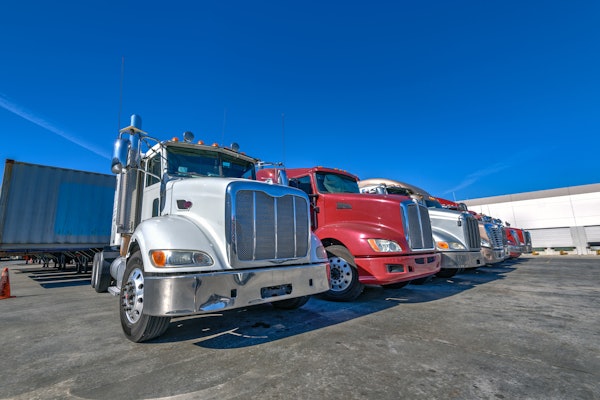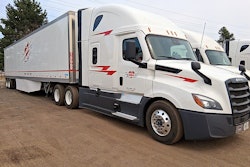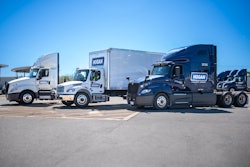International Truck and Engine Corp. said Thursday, Sept. 6, that it is questioning competitor Freightliner’s recent claim that its new Cascadia is “officially” more aerodynamic than other Class 8 commercial vehicles.
“No truck that we have tested has outperformed our new ProStar in testing to Society of Automotive Engineers standards, which include the whole trailer as well as the tractor in real-world simulations — Freightliner simply cannot say that,” says Steve Gilligan, assistant general manager of the Warrenville, Ill.-based truck maker’s Heavy Vehicle Center. The Cascadia was tested in Freightliner’s private facility, which cannot accommodate a full tractor-trailer, International says.
The difference between the testing methods is critical, according to Bob Weber, International’s chief engineer of heavy vehicles. “Since their test does not include the aft section of the trailer, it does not allow a wake to form behind the vehicle as it does on the road,” Weber says.
Both the aft end of the trailer and the size and shape of the wake behind the vehicle “have a profound influence on the overall aerodynamic drag of the tractor-trailer combination,” Weber says. “A vehicle’s wake changes shape and becomes more pronounced as cross winds — and subsequent yaw angles — increase. International’s ProStar is uniquely designed to minimize this wake and to achieve outstanding aerodynamic performance across the wind spectrum that drivers encounter every day on the road. It does not appear that Freightliner is presenting aerodynamic drag data based on the wind-averaged drag coefficient formulation recommended in the SAE best practice for truck and bus wind-tunnel testing,” Weber says, referring to SAE J1252.
Gilligan says International is looking forward to delivery of a Cascadia, ordered to conduct testing according to recommended SAE standards. However, these plans have been postponed due to an apparent delay in the shipment of Cascadias, International says. Citing communication from a Freightliner dealer, Gilligan explains that Cascadias are being held for shipment because of production issues; additionally, chassis skirts apparently will not be available until late in the year, which will impact testing of full aerodynamic specifications. International says its objective is to test all competitive products in a simulated real-world environment that removes factors that could distort the aerodynamic results.
International stands by results of previous tests that demonstrated ProStar to be more aerodynamic than any other Class 8 truck being operated in North America. International has spent more than $1 million conducting full-scale tractor-trailer testing to SAE standards at Canada’s National Research Council Institute for Aerospace Research. Competitive Class 8 vehicles including the Freightliner Century, Freightliner Columbia, Peterbilt 386, Volvo VNL780 and Kenworth T2000 were tested, filmed and the results documented, International says; none of these vehicles was more aerodynamic than ProStar, and at least one tested as much as 14 percent less aerodynamic. Aerodynamic design has been shown to be one of the key factors that can improve fuel efficiency.
International acknowledges that while Freightliner used a reputable agency, Auto Research Center Inc., to observe the testing, ARC later stated that it “was not contracted to validate the flow quality of Freightliner’s wind tunnel nor establish the criteria for these tests,” Gilligan says, adding that ARC uses full trailers when it conducts its own 1/8th-scale wind-tunnel testing of tractor-trailer combinations in its own facilities.
When the Cascadia package becomes available, International says it will support independent third-party fuel-economy testing of the Cascadia compared with the ProStar. These results will be published.









